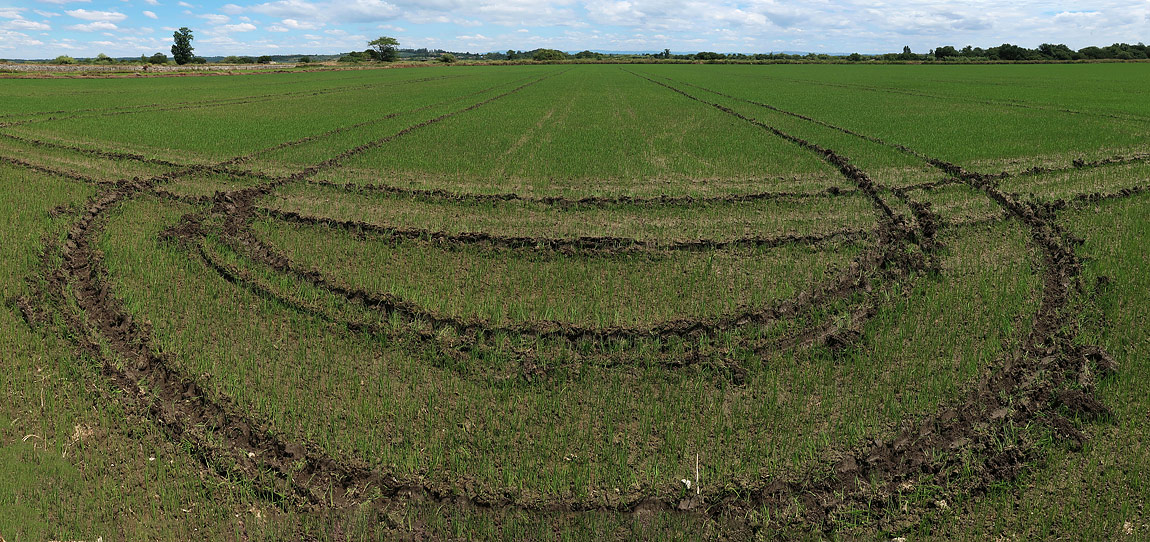The growth of rice plants requires an abundance of water and moderate-high air temperatures. In mainland Portugal, these conditions are met between spring and autumn in the basins of the Mondego, Tejo, Sorraia and Sado rivers, the country's main production areas.
The Portuguese are very fond of rice - they consume 16 kilos per year per person, the highest value in Europe! The complete rice growing cycle takes 5-7 months, depending on the variety. The seeds are buried in the spring in moist soil (or already germinated in flooded ground). When the plant reaches a certain stage of development, the land is flooded and kept that way until the seeds have formed and then dried to allow them to mature fully.
As I walked near the Mondego River last June, in an area of beautiful and extensive rice fields, with the little plants only a few centimetres high, on moist but not yet waterlogged land, I was delighted to see this choreography in the landscape.
The marks of the tractor that had sown the rice were still visible, defining well-marked straight lines curved at the end of the field. In a few weeks, these marks will no longer be observable because the plants will reach a certain height, and the land will be flooded.
Three images taken side by side, with the camera on a tripod, were assembled to obtain this panoramic view. The final image had a slight distortion, which was corrected in an image editing program.


